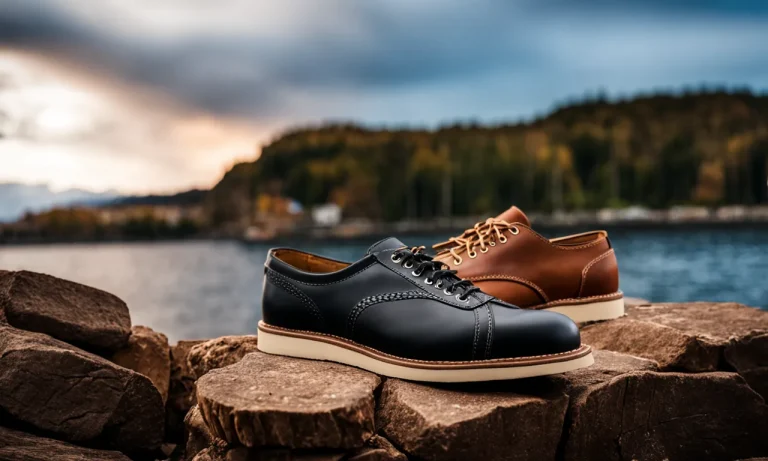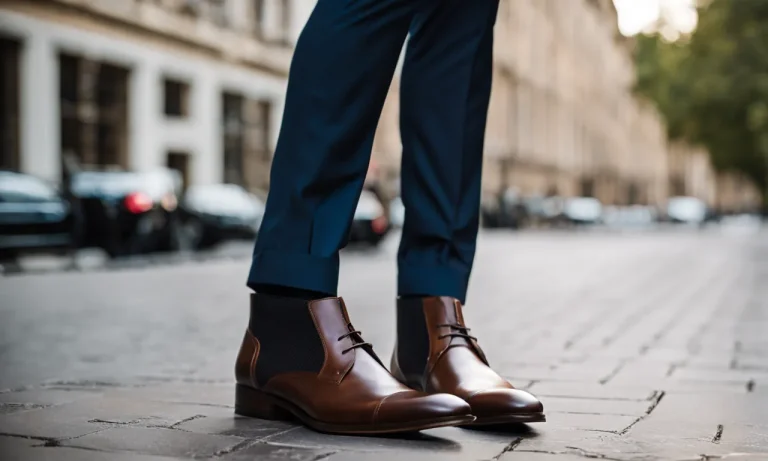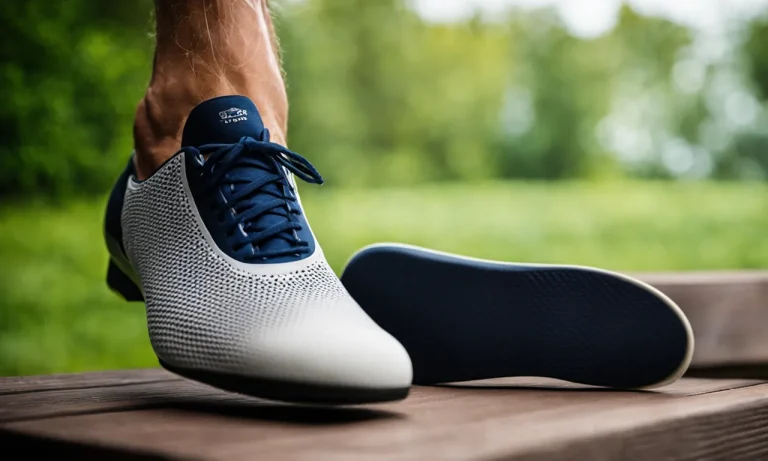When cold weather hits, Ugg boots become a popular footwear choice. With their soft sheepskin lining and furry exterior, Uggs seem like they would keep your feet nice and toasty on a winter day. But can you really wear your cozy Uggs out in the snow and cold weather without ruining them or slipping around?
Let’s dig into everything you need to know about wearing your Uggs in snowy conditions.
If you’re short on time, here’s a quick answer: You can wear your Uggs in light snow, but they may get damaged or slick in heavy snow. For heavy snow and ice, waterproof snow boots would be a better choice.
Are Uggs Meant for Snow?
Ugg boots are a popular footwear choice for many people due to their comfort and cozy style. However, when it comes to wearing them in the snow, there are a few things to consider.
Not designed for heavy snow
Ugg boots are not specifically designed for heavy snow conditions. They are made from sheepskin, which is not naturally waterproof. This means that if you wear them in deep snow or slushy conditions, your feet may get wet and cold.
Additionally, the soft sole of Ugg boots does not provide much traction on slippery surfaces, increasing the risk of slipping and falling.
It’s important to note that Ugg does offer some styles that are more suitable for winter weather, such as their “Weatherproof” collection. These boots are treated with water-resistant materials and have a more durable sole for better grip.
However, even these boots may not be suitable for extreme snow conditions.
Okay for light snow
While Uggs may not be the best choice for heavy snow, they can be worn in light snow conditions. If you’re just running errands or going for a short walk in the snow, your Ugg boots should be able to handle it.
Just be sure to treat them with a water repellent spray beforehand to help protect them from moisture.
It’s also important to clean and dry your Ugg boots properly after wearing them in the snow. This will help prolong their lifespan and prevent any damage that may be caused by moisture.
The Downsides of Wearing Uggs in Snow
Can cause damage
While Uggs are known for their cozy comfort and stylish appearance, wearing them in the snow can cause damage to the boots. The soft suede material that Uggs are made of is not designed to withstand wet conditions.
When exposed to snow and slush, the boots can become stained, discolored, and even ruined. Additionally, the moisture can seep into the boots and cause them to lose their shape and structure.
Not very grippy
Another downside of wearing Uggs in the snow is that they are not very grippy. The smooth rubber soles of Uggs do not provide much traction on slippery surfaces. This can be particularly dangerous when walking on icy sidewalks or navigating snowy slopes.
Wearing Uggs in these conditions can increase the risk of slipping and falling.
Feet may get cold and wet
Despite their reputation for warmth, Uggs may not be the best choice for keeping your feet dry and cozy in the snow. The suede material that Uggs are made of is not waterproof, meaning that they can easily absorb moisture.
As a result, your feet may end up feeling cold and wet, even if you wear thick socks. Additionally, the lack of insulation in Uggs can make it difficult to keep your feet warm in colder temperatures.
It’s important to consider these downsides before wearing Uggs in the snow. If you still want to wear them, it’s recommended to treat them with a waterproof spray and use them in less snowy or wet conditions to prolong their lifespan.
Tips for Wearing Uggs in Light Snow
Ugg boots are known for their comfort and warmth, but can they withstand the snow? While Uggs are not specifically designed for heavy snow conditions, they can be worn in light snow with a few precautions. Here are some tips to help you wear your Uggs confidently in light snow:
Spray them with waterproofer
One of the first things you should do before wearing your Uggs in light snow is to spray them with a waterproofing spray. This will help protect the boots from moisture and prevent them from getting soaked.
Make sure to choose a spray specifically designed for suede or sheepskin materials, as these are the primary materials used in Ugg boots. A waterproofing spray will create a barrier that repels water, keeping your feet dry and your boots looking great.
Wear thick socks
When wearing Uggs in light snow, it’s a good idea to wear thick socks to provide extra warmth and insulation. Thick socks will also help absorb any moisture that may seep into the boots. Look for socks made of materials like wool or thermal blends, as these will provide the best insulation.
By wearing thick socks, you can ensure that your feet stay cozy and dry, even in snowy conditions.
Add ice grips
If you anticipate encountering icy patches or slippery surfaces while wearing your Uggs in light snow, consider adding ice grips to the soles of your boots. Ice grips are small attachments that provide additional traction, helping to prevent slips and falls.
They are easy to attach and remove, and can make a significant difference in your safety and stability on slippery surfaces.
Limit time outdoors
While Uggs can handle light snow, it’s important to remember that they are not designed for extended exposure to wet conditions. If you plan on spending a significant amount of time outdoors in snowy weather, it’s best to opt for more weather-resistant footwear.
Uggs are ideal for short walks or running errands in light snow, but prolonged exposure to wet conditions can damage the boots and compromise their comfort and durability. It’s always a good idea to have a backup pair of waterproof boots for more intense winter conditions.
By following these tips, you can confidently wear your Uggs in light snow without worrying about damaging them or compromising your comfort. Remember to take care of your boots by cleaning and treating them regularly, and they will continue to provide you with warmth and style throughout the winter season.
Better Shoes for Heavy Snow
When it comes to heavy snow, it’s crucial to have the right footwear to keep your feet warm and dry. While Ugg boots may be cozy and fashionable, they might not be the best option for tackling snowy conditions. Here are some alternatives that are better suited for heavy snow:
Snow boots
Snow boots are specifically designed to handle extreme weather conditions. They are typically made with waterproof materials, such as nylon or leather, and feature insulation to keep your feet warm. These boots often have a thick, treaded sole to provide excellent traction on icy surfaces.
Some popular brands known for their high-quality snow boots include Sorel, Columbia, and The North Face.
Insulated winter boots
Insulated winter boots are another excellent choice for snowy conditions. These boots are designed to keep your feet warm in freezing temperatures. They often have a combination of insulation and waterproof materials to protect your feet from both the cold and moisture.
Some popular brands that offer insulated winter boots include Timberland, Merrell, and Kamik.
Rain boots
Rain boots, also known as rubber boots or wellies, can be a great option for snowy weather. While they may not provide the same level of insulation as snow boots or insulated winter boots, they are completely waterproof and can keep your feet dry in wet conditions.
Rain boots often have a good grip on the sole, which can help prevent slips and falls on icy surfaces. Hunter and Bogs are well-known brands for their durable and stylish rain boots.
Boots with good traction
In snowy conditions, having boots with good traction is essential to prevent slipping and falling. Look for boots with a sturdy sole that offers excellent grip on slippery surfaces. Some brands, such as Salomon and Keen, are known for their boots with advanced traction technologies like deep lugs or specialized rubber compounds.
These features can significantly improve stability and reduce the risk of accidents on snowy terrain.
While Ugg boots may be comfortable and stylish, they are not specifically designed for heavy snow. It’s important to choose footwear that prioritizes functionality and provides the necessary protection against the cold and wet conditions.
Consider opting for snow boots, insulated winter boots, rain boots, or boots with good traction to ensure a safe and enjoyable experience in the snow.
Caring for Uggs After Wearing in Snow
Ugg boots are known for their cozy comfort and stylish appeal, but can they withstand the harsh conditions of snow? While Uggs are not designed to be fully waterproof, they can be worn in light snowfall with proper care and maintenance.
Here are some essential tips for caring for your Uggs after wearing them in the snow:
Remove salt stains
During the winter months, salt is commonly used to melt ice and snow on the roads and sidewalks. Unfortunately, this can lead to unsightly salt stains on your Uggs. To remove these stains, mix equal parts of water and vinegar and gently scrub the affected areas with a soft cloth.
Rinse with clean water and allow your boots to air dry. Avoid using excessive heat, as it can damage the sheepskin material.
Dry thoroughly
After wearing your Uggs in the snow, it’s crucial to dry them thoroughly to prevent any potential damage. Start by removing any excess moisture by patting them with a clean towel. Avoid using a hairdryer or placing them near direct heat sources, as this can cause the sheepskin to warp or shrink.
Instead, allow them to air dry naturally in a well-ventilated area away from direct sunlight.
Brush suede
If your Uggs have suede exteriors, it’s essential to brush them regularly to maintain their appearance and remove any dirt or debris. Use a soft-bristled suede brush or a clean toothbrush to gently brush the suede in one direction.
This will help to restore the nap and keep your boots looking fresh and clean. Avoid using water or liquid cleaners on suede, as they can damage the material.
Use conditioner
To keep your Uggs soft and supple, it’s recommended to use a specialized sheepskin conditioner. Apply a small amount of conditioner onto a clean, damp cloth and gently rub it into the sheepskin in circular motions.
This will help to restore moisture and prevent the leather from drying out or cracking. Always follow the instructions provided by the manufacturer and avoid using any harsh chemicals or solvents.
By following these simple care tips, you can enjoy wearing your Uggs in the snow while ensuring they stay in great condition for years to come. Remember to treat your boots with care and give them the attention they deserve to keep them looking and feeling their best!
Conclusion
While your Uggs may be able to handle brief wears in light snow, it’s best to opt for more weather-appropriate footwear when heavy snow and ice is in the forecast. But if you do choose to wear your Uggs in wintry conditions, be sure to care for them properly afterwards so they stay in good shape all season long.
With the right precautions, you and your Uggs can both stay cozy and comfortable even when the weather outside is frightful.






